I have been wanting to try this classic science experiment for a very long time. I remember watching white carnations magically turning blue when I was a little girl. I knew my kids would love it too. We have shared many STEM activities for kids over the years and the classic dyeing of carnations experiment is one of our favourites.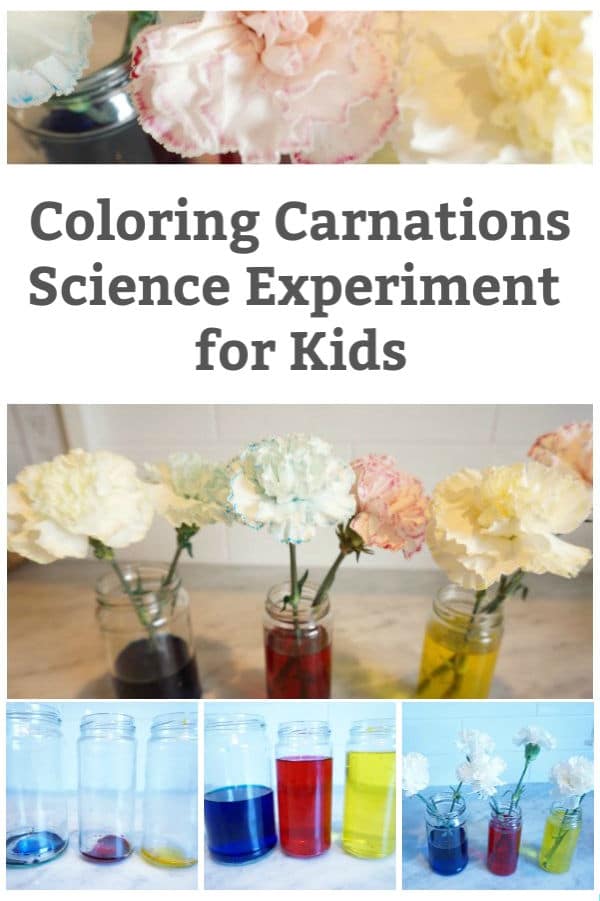
Disclosure: There are Amazon Affiliate links in this article which means, at no additional cost to you, we could receive compensation for our recommendations. You can read our full disclosure policy on our Disclosure Page for more details.
I really wanted my kids to see this science experiment through their own eyes and question what was happening and learn. So, I purchased a bouquet of inexpensive white carnations from a local flower shop and we set about with a dyed carnations science experiment for kids.
This experiment is as much about the process as it is about the end result. I began by asking my girls to guess what the result would be. If we placed 2 white carnations in 3 vases, one with a few drops of red food colouring, one with a few drops of blue food colouring and one with a few drops of yellow food colouring...what would happen to the flowers...what was their hypothesis?
Dyeing Carnations Science Experiment for Kids
You will need
3 empty, clean jars
3 different colours of food colouring - red, blue and yellow
carnations
paper to write your predictions/results
They made a few predictions;
- they predicted the carnations would change colour,
- they predicted it would take between 20 minutes to 1 day to change colour completely,
- they predicted that the yellow would be slowest to change, because it is the lightest and blue would take the shortest amount of time because it is the darkest.
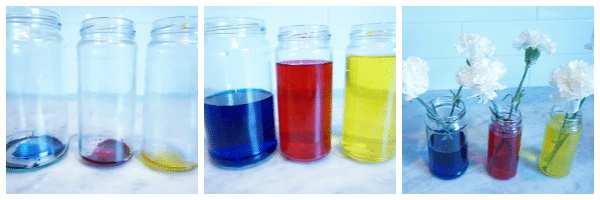
Once the hypotheses were written down we proceeded with the experiment. We placed a few drops of food colouring in the bottom of our clean jars. Then we added water to the jars. We chose red, blue and yellow.
How long does it take to dye carnations?
After the coloured water was ready to go, we placed 2 carnations in each vase, and we waited. Our results revealed that the flowers did change colour. It took about 1 hour to start seeing the change in the colour of the petals...it took 24hours to completely change. Yellow was the slowest colour. The results amazed the girls. It was so exciting to go back every few hours and check on our flowers progress.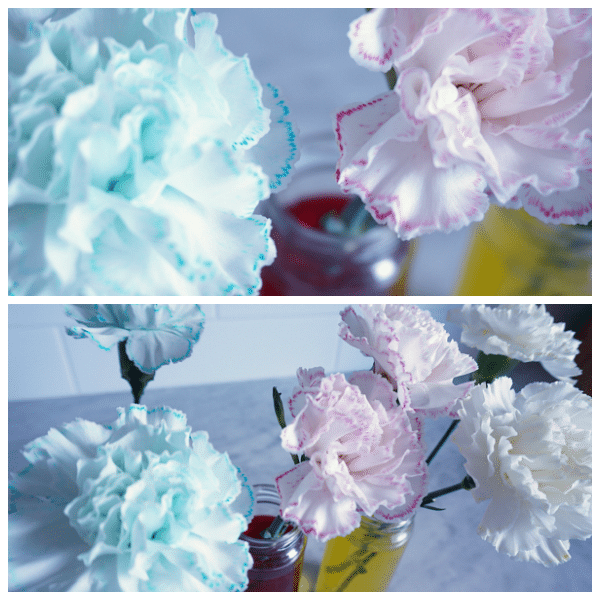
The results lead us to discuss how flowers consume the water and where the water goes after they "drink" it up. The proper scientific term is transpiration.
What is transpiration?
Transpiration is the process by which the water molecules are "pulled" up the flower, in almost a vacuum like fashion. As the water evaporates from the petals of the flower, more water molecules are drawn up the stem. We cut open a flower stem to take a look at the internal structure of the flower stem. We could see the tube in the centre of the flower stem...the xylem...this is the path the water takes up the stem and out into the flower petals. Amazing.
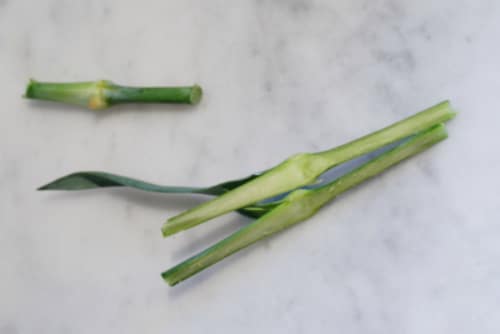
How to Make Rainbow Coloured Flowers
We decided to push the experiment one step further and see if we could make a rainbow of colourful flowers. To do this we moved one flower from each vase into the next vase. We wanted to see if the colours in the petals would actually mix. Thus, placing a yellow flower in the red dye would turn orange, placing a red flower in blue dye would turn purple..etc. Guess what we discovered...it worked. We made an incredible rainbow bouquet of flowers. Our science experiment turned into an art lesson! Truly a great idea for a carnation science fair project!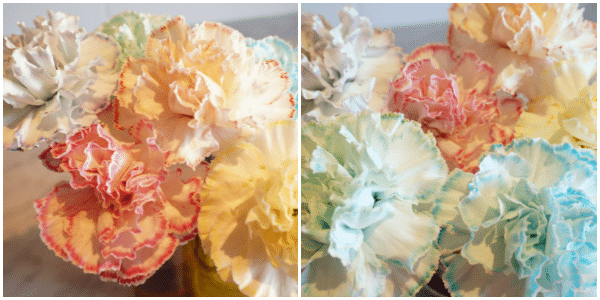
Lovely right? It was even more beautiful and amazing then I remembered. My hope is that my girls continue to question, hypothesize and test their results as they move through life. The scientific method is a powerful tool. It can apply to almost any situation...not just science. Haven't you ever wondered if eating the last chocolate brownie will give you an upset stomach? Haven't you made your prediction? Then you proceed with the experiment...eating the brownie. Haven't we all lived with the results of eating the last chocolate brownie...an upset stomach and a whole lot of regret. See the scientific method at work! Ha!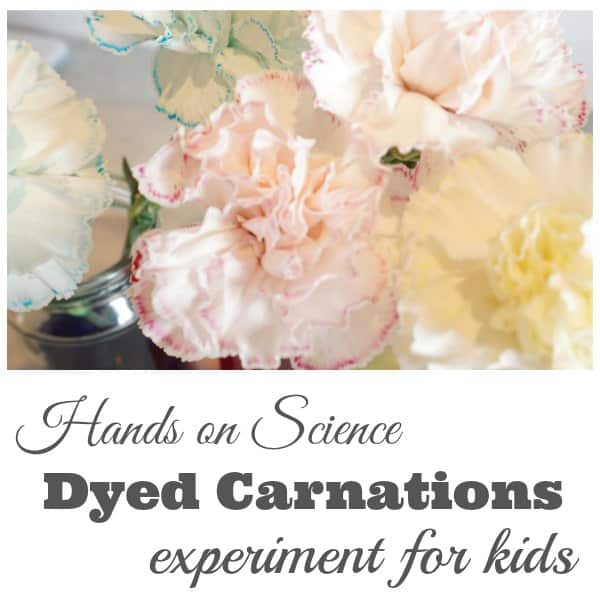
Have you ever tried colouring carnations? What science experiments from your childhood do you want to do with your kids?
Related Posts
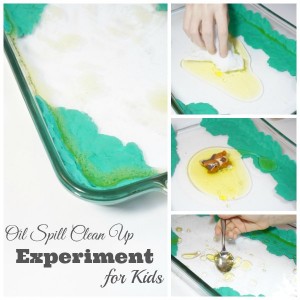
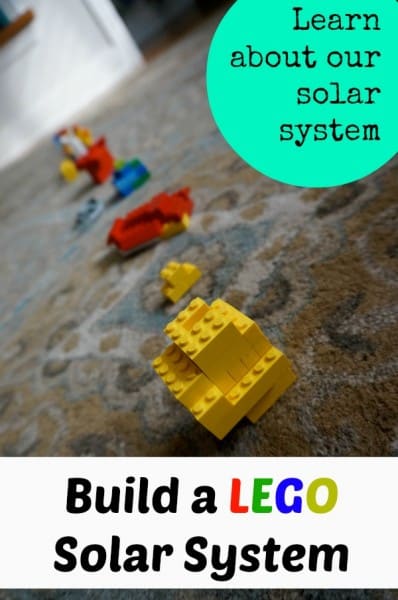
BE SURE TO SUBSCRIBE TO KITCHEN COUNTER CHRONICLES TO HAVE OUR DELICIOUS RECIPES, FUN CRAFTS & ACTIVITIES DELIVERED DIRECTLY TO YOUR INBOX.
FOLLOW KITCHEN COUNTER CHRONICLES ON FACEBOOK:: PINTEREST :: TWITTER

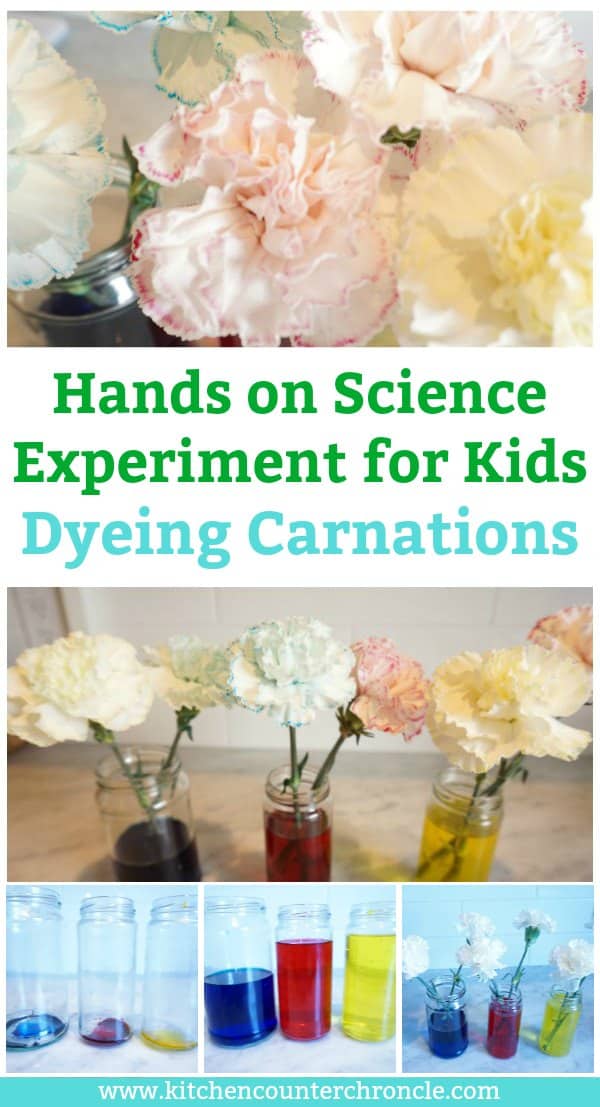
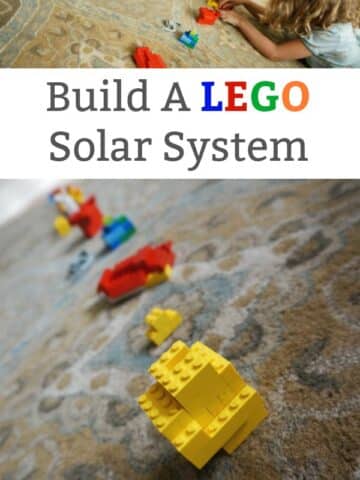
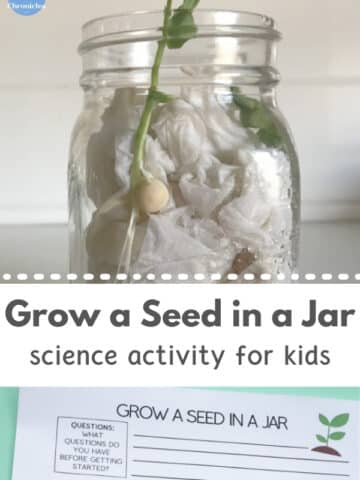
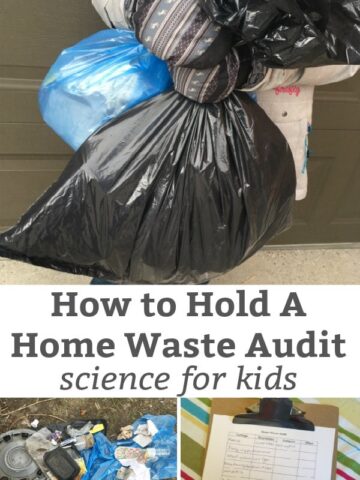
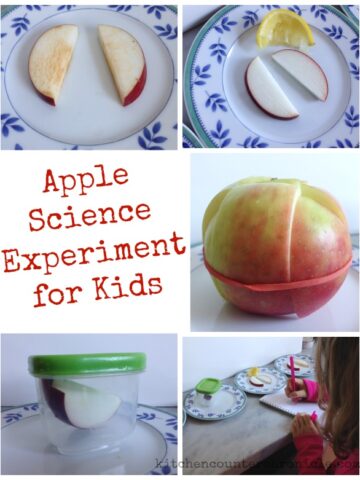
Cerys @ Rainy Day Mum says
I've never done this experiment with carnations - we've used roses, diasies, daffodils, tulips but not carnations. I love the colour mixing variation on it as well.
maryanne @ mama smiles says
I really need to do this with my kids this year. It works so beautifully with carnations!
Jamie W says
I picked up some carnations at the store yesterday and they have been in water for almost 24 hours already and so far only 1 of the yellow has even started to change?
Jen says
Hmm, try trimming the bottom of the flowers and putting them back in the water...a fresh cut might help get things moving. Let me know how it goes.
Valerie says
We're about to embark on this science experiment today! Excited about it! Just one comment about your webpage, which has been so helpful. The correct spelling would be "dyeing carnations." "Dying carnations" are...well, they're just dead flowers. :0) Thanks again!
jessica says
what happen if u use warm water insead of colfd water?????? IF U READ THINS CAN U TELL ME?? plz
Jen says
Hi Jessica, flowers tend to like cooler water as warmer water forces them to open quicker...that's why I suggest cool water. Give it a try with warm water, I'm sure it would work as well.
jessica says
thx u Jen now i cna get a little help withe my flower dye project.